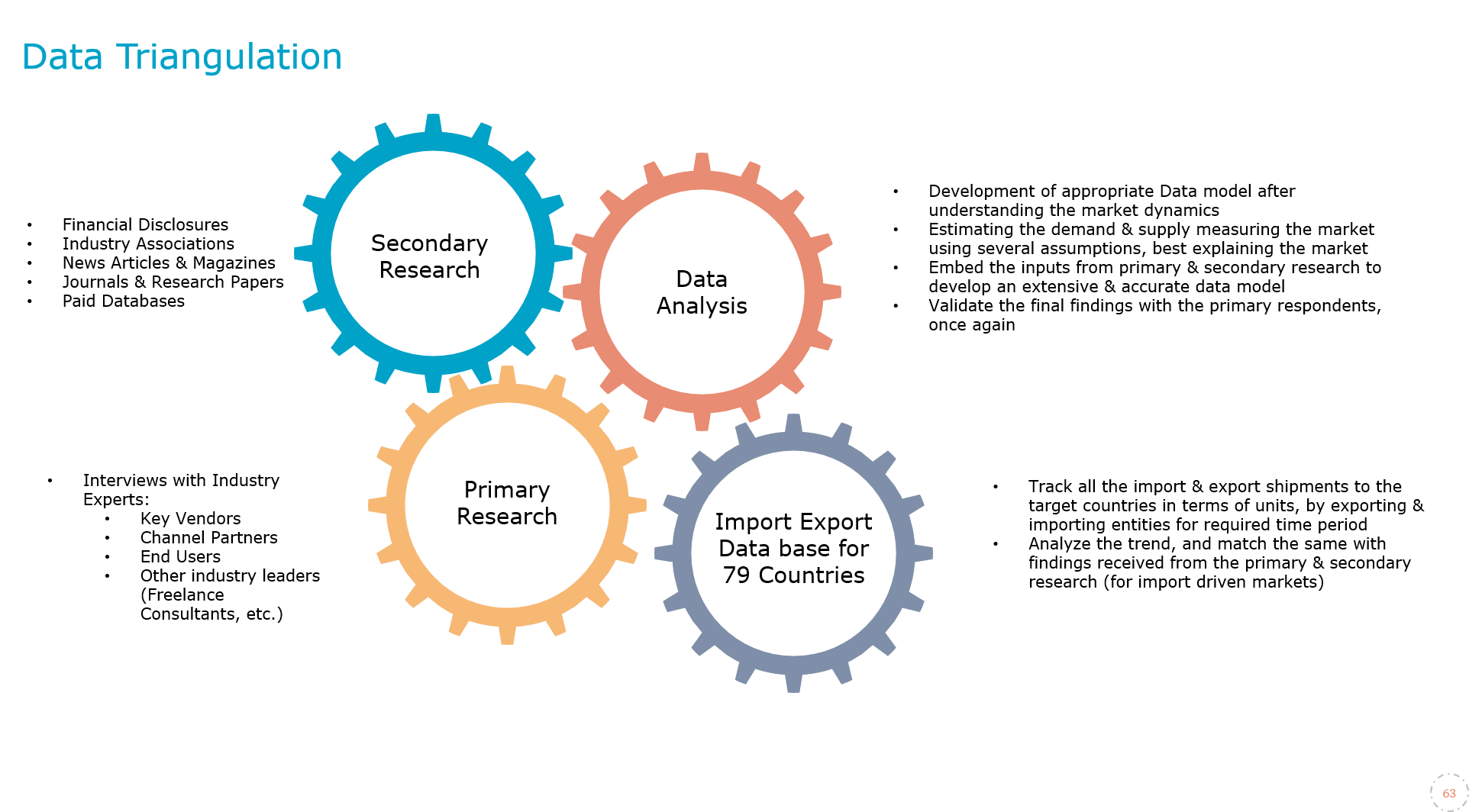
Global Payment Gateway Market Research Report: Forecast (2025-2030)
By Type (Hosted, Self-hosted & Bank Integrated), By Enterprise Size (SME and Large Enterprise), By End-User (Retail, Travel & Hospitality, Healthcare, Education, Government, Utilit...ies & Others), By Region (North America, South America, Europe, Asia-Pacific, Middle East & Africa), By Country (U.S, Canada, Mexico, Brazil, Germany, France, Italy, The U.K, Russia & CIS, Spain, China, India, Japan, South Korea, South East Asia, Saudi Arabia, UAE, Turkey, Qatar, South Africa, Egypt), By Company (PayPal Holdings, Stripe, Inc, Adyen N.V., Inc, Amazon Pay, Square, Inc, Skrill limited, PayU group, Ingenico Group, Alipay.com Co Ltd, Paytm Mobile Solutions Pvt. Ltd) Read more
- FinTech
- May 2025
- Pages 255
- Report Format: PDF, Excel, PPT
Market Definition
A Payment Gateway is an online money operating gateway that aids digital transactions by connecting buyers to sellers. It authorizes the payer's account details, including debit or credit card details, safely, ensures the availability of funds required to transfer, and eventually, by moving sensitive, thus enabling the seller to get paid the amount. Hence, a payment gateway is a digital interface for transferring money between the seller and the buyer. It is an asset to every business as it ensures secure, smooth, and hassle-free transactions. Furthermore, with technological advancements, payment gateways constantly evolve per new customers' demands and preferences.
Market Insights & Analysis: Global Payment Gateway Market (2025-30):
The Global Payment Gateway Market size was valued at around USD 28.7 billion in 2024 and is projected to reach USD 56.92 billion by 2030. Along with this, the market is estimated to grow at a CAGR of around 12.09% during the forecast period, i.e., 2025-30.
The market growth can be accredited to the rapid adoption of smartphone-based payments encouraged by the expanding e-commerce platforms. Consequently, sellers and buyers collectively rely on digital transaction channels for more accessible, safe, and hassle-free transactions, which, in turn, prompts the further adoption of such gateways in the coming years.
| Report Coverage | Details |
|---|---|
| Historical Years | 2020–23 |
| Forecast Years | 2025–30 |
| Market Value in 2024 | USD 28.7 Billion |
| Market Value by 2030 | USD 56.92 Billion |
| CAGR (2025–30) | 12.09% |
| Leading Region | Asia-Pacific |
| Top Key Players | PayPal Holdings, Stripe, Inc, Adyen N.V., Inc, Amazon Pay, Square, Inc, Skrill limited, PayU group, Ingenico Group, Alipay.com Co Ltd, Paytm Mobile Solutions Pvt. Ltd, and other |
| Segmentation | By Type (Hosted, Self-hosted & Bank Integrated), By Enterprise Size (SME and Large Enterprise), By End-User (Retail, Travel & Hospitality, Healthcare, Education, Government, Utilities & Others), By Region (North America, South America, Europe, Asia-Pacific, Middle East & Africa), By Country (U.S, Canada, Mexico, Brazil, Germany, France, Italy, The U.K, Russia & CIS, Spain, China, India, Japan, South Korea, South East Asia, Saudi Arabia, UAE, Turkey, Qatar, South Africa, Egypt), By Company (PayPal Holdings, Stripe, Inc, Adyen N.V., Inc, Amazon Pay, Square, Inc, Skrill limited, PayU group, Ingenico Group, Alipay.com Co Ltd, Paytm Mobile Solutions Pvt. Ltd) |
| Key Report Highlights |
|
*Boost strategic growth with in-depth market analysis - Get a free sample preview today!
Besides, to strengthen the digital payment infrastructure, e-commerce companies look forward to collaborating with payment transaction gateway providers, resulting in a substantial shift in transaction mode. In addition, the increasing adoption of mobile-based apps pushing digital fund transfers also emerges as an opportunistic area for tech giants. However, these online transactions are required to be safe and secure. Thus, these app companies are constantly looking for trustworthy gateways that help prevent credit and debit card scams and other fraudulent activities, thereby eliminating the need to deal with the hassle for the sender and receiver while making cash transactions.
In addition, as consumers shift to online payment transactions, the expectation of a perfect user experience and minimal time taken during payment processing is expected and demanded. This is likely to augment the need for advanced and user-friendly payment gateways in the coming years. Therefore, the key players might use feedback methodology to make the current digital transaction pathway even more feasible and in line with the ever-changing advancements in IoT and artificial intelligence. Such feedback can be attained through user insights, waiting time, studying the pattern of payment, and adding additional features and modifications to the current system. With stiffening competition among the existing market players and various new entrants within the industry, the market is likely to benefit globally.

Global Payment Gateway Market Driver:
Online Shopping Trends and Government Initiatives – A notable shift in shopping patterns with growing internet penetration has led to the large-scale adoption of payment gateways in recent years. In addition, numerous government initiatives encouraging digital transactions further promote such extensive adoption, citing it as vital for the country’s economy in terms of maximized revenues, transparency, and ICT technologies. As such, initiatives like the Unified Payment Interface (UPI) launched by the Indian government and the promotion of ePayments by the Monetary Authority Singapore (MAS) have fueled market growth. Moreover, over the past few years, retailers have evolved into taking all forms of payment options available owing to the tangible presence of smartphones and cards. Thus retailers are putting efforts into employing innovative mobile transaction solutions, risk management, and customer service to stay in line with modern payment solutions. Backed by these aspects, the industry is expected to expand its horizon in the coming years.
Global Payment Gateway Market Opportunity:
Intensifying Financial Inclusion Worldwide – A considerable rural and pastoral population is yet to benefit from online transactions or even traditional banking. Citing this, developmental sectors and the government has recognized the need to provide financial services to the people living in rural and remote locations. Since the lack of digital literacy is a barrier to providing connectivity and promoting financial inclusion, various governments are aiding in digitalizing and bringing resources and services to the rural sector. Here, digital payments are essential as people can open a bank account and transact through their smartphones. The introduction of digital wallets also allures people to turn towards digital banking. This increasing adoption of banking accounts and digital wallets provides a growth opportunity for the industry.
Global Payment Gateway Market Challenge:
Lack of Standardized regulations for International Transactions – Businesses continuously purchase goods and services from around the world and across countries. However, due to the lack of standardized global regulations and varying government restrictions, digital payment and transaction providers fail to make the most out of the such opportunity. Payment and data storage requirements varying from country to country are becoming obstacles to efficient cross-border payments. Moreover, the local payment infrastructure of many countries needs to be at par to handle international transactions. Given the independent development of payment systems, the need for standardized regulation and automation across inter-bank and intra-bank networks is rising to prevent cyber-attacks, thereby impeding industry growth.
Global Payment Gateway Market Trend:
Digitalization of Business and Enterprises – The rapid adoption of digital marketing for businesses to maintain an online presence has resulted in increased online transactions as firms are keen to digitalize their payment methods. Moreover, with progressing technological advancements, companies look forward to offering their clients and customers novel digital services. These advancements have collectively led to increased online payment modes through debit or credit cards, digital wallets, and net banking.
On the other hand, consumers rely heavily on online services such as ticket booking websites instead of traditional methods. Additionally, banks nowadays are collaborating with companies and enterprises to provide lucrative customer offers and attract more users. Backed by these aspects, the global payment gateway industry is anticipated to expand during the forecast years.
Global Payment Gateway Market (2025-30): Segmentation Analysis
The Global Payment Gateway Market study of MarkNtel Advisors evaluates & highlights the major trends & influencing factors in each segment & includes predictions for the period 2025–2030 at the global level. Based on the analysis, the market has been further classified as:
Based on Type:
- Hosted
- Self-hosted
- Bank Integrated
Of these three, the Hosted type acquired a larger market share and is expected to grow further in the forecast years. Hosted gateway is a third-party checkout system that directs clients to the payment service provider’s (PSP) website. Because of easy payment processing, reduced merchant liability, and third-party payment service handling the entire transaction process while providing enhanced data protection and security, the demand for hosted payment gateways is upscaling. Along with it, hosted payment gateways also reduce fraudulent activities, as hosted gateway complies with the Payment Card Industry Data Security Standard (PCI DSS) and becomes a safer and more secure transaction option. As such, hosted type remains a solution for utilities looking for a solution that facilitates continued usage of dependable online billing and payments, thereby dominating the market in the coming years.
Based on Enterprise Size:
- Small and Medium Enterprise
- Large Enterprise
Here, Large enterprises garnered the maximum share of the Global Payment Gateway Market, and the same trend is likely to prevail from 2025 to 30. It owes to a higher need to imply effective solutions for their customers visiting their websites, as they have a higher number of customer visits and dependency on a diversified product portfolio, high level of security, and payment transactions. Moreover, payment transaction solutions can ensure a convenient checkout process for consumers with supporting digital payment methods, including cards and net banking. Customers' trust in such gateways as a reliable digital transaction medium protects sensitive customer and merchant data and boosts customer enterprise interaction, further elevating the market.
Additionally, due to people's preference for online shopping, huge enterprises play a crucial role in e-commerce and online transaction. The enterprise gateway payments medium enables financial institutions to simplify the payment process and execute the transfer on a single, integrated, real-time platform. With the demand for transactions in large enterprises, the market is likely to elevate further.
Global Payment Gateway Market (2025-30): Regional Projection
Geographically, the Global Payment Gateway Market expands across:
- North America
- South America
- Europe
- Middle East and Africa
- Asia-Pacific
Here, the Asia-Pacific is expected to be the fastest-growing marketplace in the forecast years. This growth can be attributed to several government initiatives targeted at digitalizing the banking and transaction infrastructure with added modification of enhanced online payment infrastructure. Furthermore, with expanding digital rate of industrialization, the Asia-Pacific populace is obliged to use digital gadgets, especially smartphones, to regulate their daily and professional lifestyle. This would lead to further market expansion, as the public would lean towards online transactions more.
Additionally, the governments of several countries have taken further initiatives to fuel the process of digitalized money transactions. For instance, the Reserve Bank of India(RB) has regulated gateways such as Bharat Pay and Paytm. Likewise, the Chinese government is working towards improving internet access in rural areas after reshaping china’s payment landscape through Alipay and WeChat Pay. Similarly, as early technology adopters, Japan is experiencing continuous growth in the adoption of credit cards in online transactions. These initiatives and the region's large population add volume to the transaction. Besides, domestic & international enterprises investing in this region are the stepping stones towards further expansion of the industry.
Global Payment Gateway Industry Recent Development:
- 2024: Adyen and Billie partner up to bring Buy Now, Pay Later to business across Europe. This includes managing cash flow for buyers and sellers, eliminating payment defaults and fraud risks, and simplifying dunning and collection processes. Billie's BNPL solution therefore offers a cost-efficient alternative to corporate credit cards.
- 2024: PayU announced a partnership with Fynd to enhance payment experiences for merchants in India. This collaboration aligns with both companies' goals to help Indian merchants adopt digital-first strategies and increase revenue.
Gain a Competitive Edge with Our Global Payment Gateway Market Report
- Global Payment Gateway Market Report by MarkNtel Advisors provides a detailed & thorough analysis of market size & share, growth rate, competitive landscape, and key players. This comprehensive analysis helps businesses gain a holistic understanding of the market dynamics & make informed decisions.
- This report also highlights current market trends & future projections, allowing businesses to identify emerging opportunities & potential challenges. By understanding market forecasts, companies can align their strategies & stay ahead of the competition.
- Global Payment Gateway Market Report aids in assessing & mitigating risks associated with entering or operating in the market. By understanding market dynamics, regulatory frameworks, and potential challenges, businesses can develop strategies to minimize risks & optimize their operations.
*Reports Delivery Format - Market research studies from MarkNtel Advisors are offered in PDF, Excel and PowerPoint formats. Within 24 hours of the payment being successfully received, the report will be sent to your email address.
Frequently Asked Questions
- Introduction
- Research Process
- Assumption
- Market Segmentation
- Market Definition
- Executive Summary
- Macroeconomic Outlook
- Global Payment Gateway Market Outlook (2020-2030F)
- Market Potential & Outlook
- By Revenues
- Market Segmentation & Outlook
- By Type
- Hosted
- Self-hosted
- Bank integrated
- By Enterprise Size
- Small & Medium Enterprise
- Large Enterprise
- By End-Users
- Retail
- Travel
- Hospitality
- Healthcare
- Education
- Government
- Utilities
- Others
- By Region
- North America
- South America
- Europe
- Asia-Pacific
- Middle East & Africa
- By Company
- Revenue Shares
- Strategic Factorial Indexing
- Competitor Placement in MarkNtel Quadrant
- By Type
- Market Potential & Outlook
- North America Payment Gateway Market Outlook (2020-2028)
- Market Potential & Outlook
- By Revenues
- Market Segmentation & Outlook
- By Type
- By Enterprise Size
- By End-user
- By Country
- US
- Mexico
- Canada
- The US Payment Gateway Market Outlook (2020-2030F)
- Market Potential & Outlook
- By Revenues
- Market Segmentation & Outlook
- By Type
- By Enterprise Size
- By End-User
- By Region
- Market Potential & Outlook
- Canada Payment Gateway Market Outlook (2020-2030F)
- Market Potential & Outlook
- By Revenues
- Market Segmentation & Outlook
- By Type
- By Enterprise Size
- By End-User
- By Region
- Market Potential & Outlook
- Mexico Payment Gateway Market Outlook (2020-2030F)
- Market Potential & Outlook
- By Revenues
- Market Segmentation & Outlook
- By Type
- By Enterprise Size
- By End-User
- By Region
- Market Potential & Outlook
- Market Potential & Outlook
- South America Payment Gateway Market Outlook (2020-2030)
- Market Potential & Outlook
- By Revenues
- Market Segmentation & Outlook
- By Type
- By Enterprise Size
- By End-User
- By Country
- Brazil
- Others
- Market Potential & Outlook
- Brazil Payment Gateway Market Outlook (2020-2030F)
- Market Potential & Outlook
- By Revenues
- Market Segmentation & Outlook
- By Type
- By Enterprise Size
- By End-User
- By Region
- Market Potential & Outlook
- Europe Payment Gateway Market Outlook (2020-2030)
- Market Potential & Outlook
- Market Potential & Outlook
- By Revenues
- Market Segmentation & Outlook
- By Type
- By Enterprise Size
- By End-User
- By Country
- Germany
- France
- Italy
- UK
- Spain
- Russia & CIS
- Germany Payment Gateway Market Outlook (2020-2030F)
- Market Potential & Outlook
- By Revenues
- Market Segmentation & Outlook
- By Type
- By Enterprise Size
- By End-User
- By Region
- Market Potential & Outlook
- France Payment Gateway Market Outlook (2020-2030F)
- Market Potential & Outlook
- By Revenues
- Market Segmentation & Outlook
- By Type
- By Enterprise Size
- By End-User
- By Region
- Market Potential & Outlook
- Italy Payment Gateway Market Outlook (2020-2030F)
- Market Potential & Outlook
- By Revenues
- Market Segmentation & Outlook
- By Type
- By Enterprise Size
- By End-User
- By Region
- Market Potential & Outlook
- The UK Payment Gateway Market Outlook (2020-2030F)
- Market Potential & Outlook
- By Revenues
- Market Segmentation & Outlook
- By Type
- By Enterprise Size
- By End-User
- By Region
- Market Potential & Outlook
- Russia & CIS Payment Gateway Market Outlook (2020-2030F)
- Market Potential & Outlook
- By Revenues
- Market Segmentation & Outlook
- By Type
- By Enterprise Size
- By End-User
- By Region
- Market Potential & Outlook
- Spain Payment Gateway Market Outlook (2020-2030F)
- Market Potential & Outlook
- By Revenues
- Market Segmentation & Outlook
- By Type
- By Enterprise Size
- By End-User
- By Region
- Market Potential & Outlook
- Asia-Pacific Payment Gateway Market Outlook (2020-2030)
- Market Potential & Outlook
- By Revenues
- Market Segmentation & Outlook
- By Type
- By Enterprise Size
- By End-User
- By Country
- China
- India
- Japan
- South Korea
- South East Asia
- Market Potential & Outlook
- China Payment Gateway Market Outlook (2020-2030F)
- Market Potential & Outlook
- By Revenues
- Market Segmentation & Outlook
- By Type
- By Enterprise Size
- By End-User
- By Region
- Market Potential & Outlook
- India Payment Gateway Market Outlook (2020-2030F)
- Market Potential & Outlook
- By Revenues
- Market Segmentation & Outlook
- By Type
- By Enterprise Size
- By End-User
- By Region
- Market Potential & Outlook
- Japan Payment Gateway Market Outlook (2020-2030F)
- Market Potential & Outlook
- By Revenues
- Market Segmentation & Outlook
- By Type
- By Enterprise Size
- By End-User
- By Region
- Market Potential & Outlook
- South Korea Payment Gateway Market Outlook (2020-2030F)
- Market Potential & Outlook
- By Revenues
- Market Segmentation & Outlook
- By Type
- By Enterprise Size
- By End-User
- By Region
- Market Potential & Outlook
- South East Asia Payment Gateway Market Outlook (2020-2030F)
- Market Potential & Outlook
- By Revenues
- Market Segmentation & Outlook
- By Type
- By Enterprise Size
- By End-User
- By Region
- Market Potential & Outlook
- Middle East Payment Gateway Market Outlook (2020-2030)
- Market Potential & Outlook
- By Revenues
- Market Segmentation & Outlook
- By Type
- By Enterprise Size
- By End-User
- By Country
- Saudi Arabia
- UAE
- Qatar
- Turkey
- Market Potential & Outlook
- Saudi Arabia Payment Gateway Market Outlook (2020-2030F)
- Market Potential & Outlook
- By Revenues
- Market Segmentation & Outlook
- By Type
- By Enterprise Size
- By End-User
- By Region
- Market Potential & Outlook
- UAE Payment Gateway Market Outlook (2020-2030F)
- Market Potential & Outlook
- By Revenues
- Market Segmentation & Outlook
- By Type
- By Enterprise Size
- By End-User
- By Region
- Market Potential & Outlook
- Qatar Payment Gateway Market Outlook (2020-2030F)
- Market Potential & Outlook
- By Revenues
- Market Segmentation & Outlook
- By Type
- By Enterprise size
- By End-User
- By Region
- Market Potential & Outlook
- Africa Payment Gateway Market Outlook (2020-2030)
- Market Potential & Outlook
- By Revenues
- Market Segmentation & Outlook
- By Type
- By Enterprise size
- By End-User
- South Africa
- Egypt
- Turkey Payment Gateway Market Outlook (2020-2030F)
- Market Potential & Outlook
- By Revenues
- Market Segmentation & Outlook
- By Type
- By Enterprise Size
- By End-User
- By Region
- Market Potential & Outlook
- South Africa Payment Gateway Market Outlook (2020-2030F)
- Market Potential & Outlook
- By Revenues
- Market Segmentation & Outlook
- By Type
- By Enterprise Size
- By End-User
- By Region
- Market Potential & Outlook
- Egypt Payment Gateway Market Outlook (2020-2030F)
- Market Potential & Outlook
- By Revenues
- Market Segmentation & Outlook
- By Type
- By Enterprise Size
- By End-User
- By Region
- Market Potential & Outlook
- Global Payment Gateway Market Policies, Regulations, Product Standards
- Global Payment Gateway Market Trends & Insights
- Global Payment Gateway Market Dynamics
- Growth Drivers
- Challenges
- Impact Analysis
- Global Payment Gateway Market Hotspot and Opportunities
- Global Payment Gateway Market Key Strategic Imperatives for Success and Growth
- Competition Outlook
- Competition Matrix
- Product Portfolio
- Brand Specialization
- Target Markets
- Target End Users
- Research & Development
- Strategic Alliances
- Strategic Initiatives
- Company Profiles (Business Description, Product Segments, Business Segments, Financials, Strategic Alliances/ Partnerships, Future Plans)
- PayPal Holdings
- Stripe, Inc.
- Adyen NV., Inc
- Amazon Pay
- Square, Inc
- Skrill limited
- PayU group
- Ingenico Group
- Alipaycom Co Ltd
- Paytm Mobile Solutions Pvt. Ltd
- Disclaimer
MarkNtel Advisors follows a robust and iterative research methodology designed to ensure maximum accuracy and minimize deviation in market estimates and forecasts. Our approach combines both bottom-up and top-down techniques to effectively segment and quantify various aspects of the market. A consistent feature across all our research reports is data triangulation, which examines the market from three distinct perspectives to validate findings. Key components of our research process include:
1. Scope & Research Design At the outset, MarkNtel Advisors define the research objectives and formulate pertinent questions. This phase involves determining the type of research—qualitative or quantitative—and designing a methodology that outlines data collection methods, target demographics, and analytical tools. They also establish timelines and budgets to ensure the research aligns with client goals.
2. Sample Selection and Data Collection In this stage, the firm identifies the target audience and determines the appropriate sample size to ensure representativeness. They employ various sampling methods, such as random or stratified sampling, based on the research objectives. Data collection is carried out using tools like surveys, interviews, and observations, ensuring the gathered data is reliable and relevant.
3. Data Analysis and Validation Once data is collected, MarkNtel Advisors undertake a rigorous analysis process. This includes cleaning the data to remove inconsistencies, employing statistical software for quantitative analysis, and thematic analysis for qualitative data. Validation steps are taken to ensure the accuracy and reliability of the findings, minimizing biases and errors.

4. Data Forecast and FinalizationThe final phase involves forecasting future market trends based on the analyzed data. MarkNtel Advisors utilize predictive modeling and time series analysis to anticipate market behaviors. The insights are then compiled into comprehensive reports, featuring visual aids like charts and graphs, and include strategic recommendations to inform client decision-making









